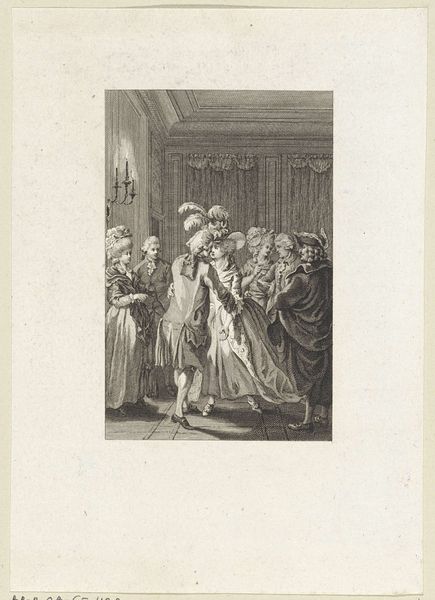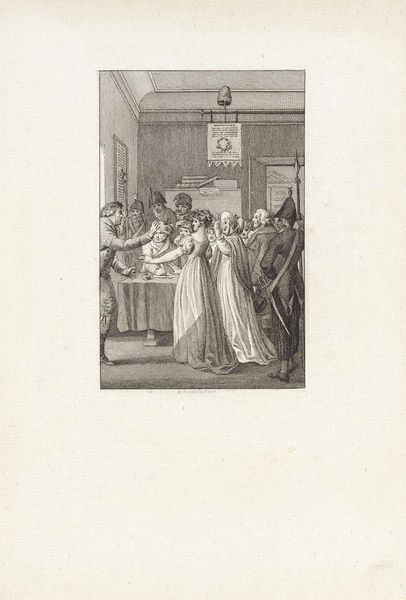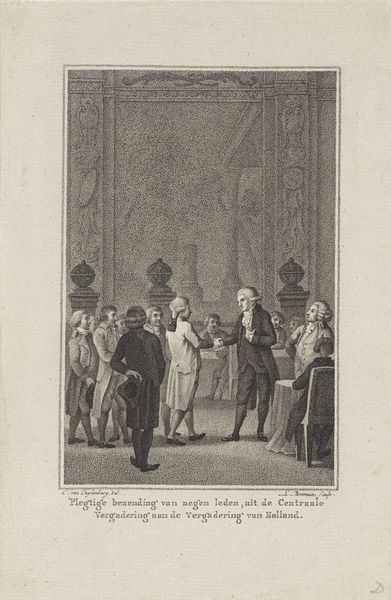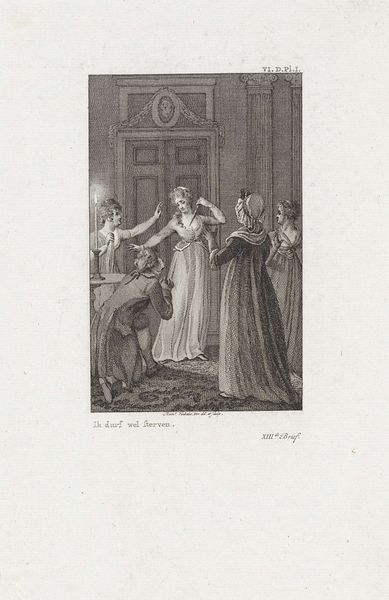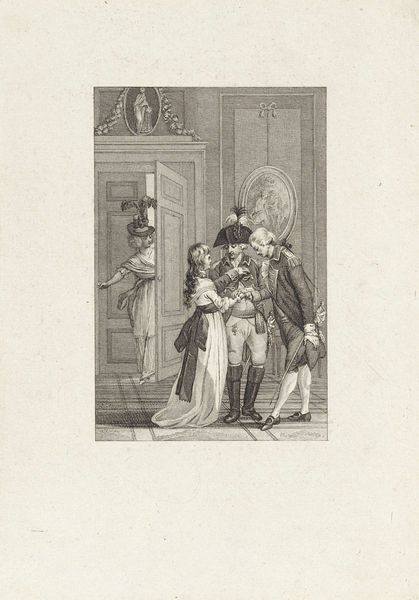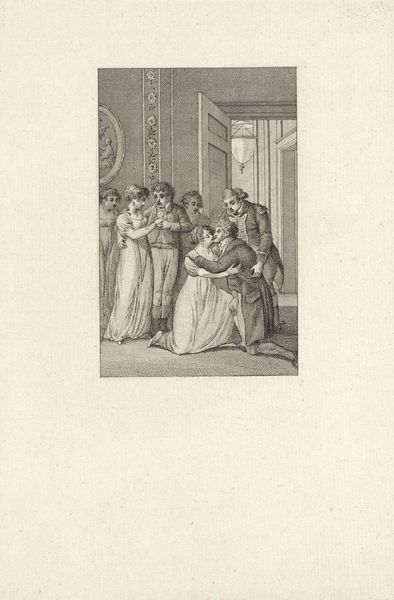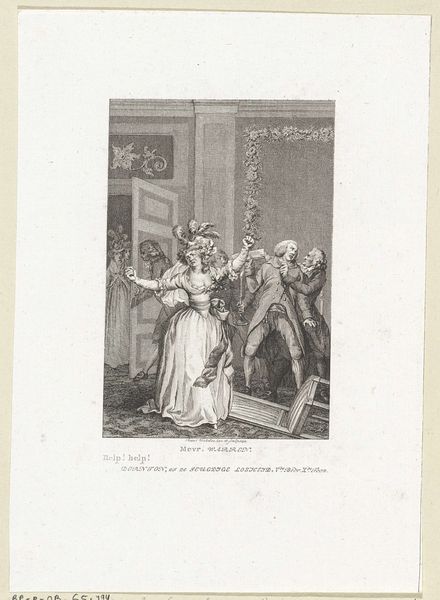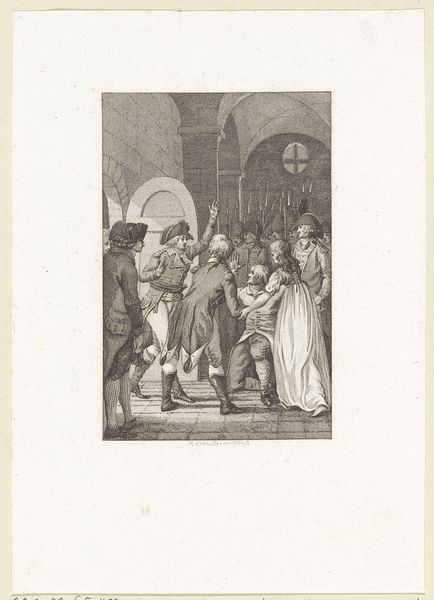
drawing, paper, engraving
#
drawing
#
narrative-art
#
paper
#
romanticism
#
genre-painting
#
history-painting
#
engraving
Dimensions: height 249 mm, width 169 mm
Copyright: Rijks Museum: Open Domain
Curator: This drawing, titled “Gemaskerd Bal” or “Masked Ball,” was created in 1809 by Reinier Vinkeles. It's an engraving on paper currently held in the Rijksmuseum collection. What strikes you first about this bustling scene? Editor: Immediately, I’m drawn to the use of stark lighting to define the central figures and highlight the textures of their costumes. It creates a slightly theatrical atmosphere. Curator: It's interesting that you note the costumes. Consider that an engraving like this was created through a painstaking process. The artist meticulously carved lines into a metal plate, the precise quality of the line being critical to communicate the story. We can ask, what was Vinkeles thinking in making these choices? What kind of burin and paper did he employ to achieve such effects? Editor: Absolutely. Beyond just the aesthetic qualities, who is at this ball, and who is invited becomes a central question. Look at those peering down from above. The social context here is crucial. This isn’t just a ball; it’s a carefully constructed performance, highlighting rigid social stratification within this historical moment. Curator: Performance, yes. And within the drawing, there's an interesting play of light and shadow across different materials—the crispness of the uniforms versus the softer rendering of fabrics. How does the choice of ink and paper affect our interpretation of the piece as a historical document? Editor: And consider the subtle politics at play! The masked ball allows a temporary suspension of social rules. This allows certain forms of interaction to take place within very controlled parameters. We have to remember that these sorts of images are not simply documenting history, they are shaping it. Curator: Indeed. What's fascinating to me is understanding the distribution and consumption of images like this. These engravings made art accessible beyond the elite circles, contributing to broader cultural dialogues. Editor: I think understanding the interplay of these aesthetic and sociopolitical forces really unlocks its importance in considering visual culture of the Romantic period. It speaks volumes about power and performance. Curator: Thinking about Vinkeles’ practice reminds us to examine how the material decisions in artistic production influence art history itself. Editor: And for me, understanding its influence in turn sheds light on the social forces and political anxieties that shaped its creation in the first place.
Comments
No comments
Be the first to comment and join the conversation on the ultimate creative platform.
